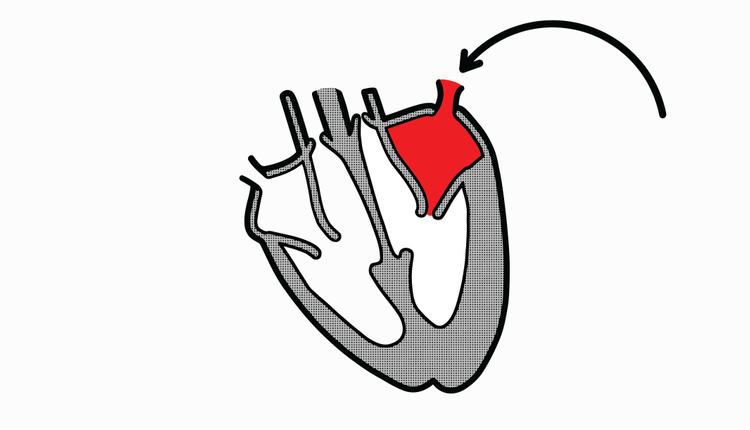Structure of the cardiovascular system
I can describe the pathway of blood through the cardiovascular system and explain its importance in maintaining blood circulation during performance in physical activity and sport.
Structure of the cardiovascular system
I can describe the pathway of blood through the cardiovascular system and explain its importance in maintaining blood circulation during performance in physical activity and sport.
These resources will be removed by end of Summer Term 2025.
Lesson details
Key learning points
- Deoxygenated blood travels from the body into the heart's right side then through the pulmonary artery to the lungs.
- The pulmonary vein carries oxygenated blood from the lungs to the left side of the heart then out the aorta to the body.
- Valves in the heart prevent the backflow of blood.
- The heart is a double circulatory pump. The pulmonary circuit carries blood to the lungs then back to the heart.
- The systemic circuit carries oxygenated blood out of the heart to the body tissues and returns with deoxygenated blood.
Keywords
Atria - the upper chambers of the heart. The right atrium receives deoxygenated blood and the left receives oxygenated blood
Ventricles - the lower chambers of the heart that receive blood from the atria before pumping it out to the body/lungs
Valves - structural feature that prevents backflow of blood
Pulmonary circulation - carries deoxygenated blood from the right side of the heart to the lung then back to the left side of the heart
Systemic circulation - carries oxygenated blood from the left side of the heart to the rest of the body. After delivering oxygen and nutrients to the body, the blood returns to the right side of the heart deoxygenated
Common misconception
Which side of the heart is the left when you look at the body and which side is oxygenated versus deoxygenated.
The left side of the heart is nearest to your left armpit and carries oxygenated blood, the right side of the heart has deoxygenated blood (remember: LORD - left, oxygenated and right, deogygenated).
To help you plan your year 10 physical education lesson on: Structure of the cardiovascular system, download all teaching resources for free and adapt to suit your pupils' needs...
To help you plan your year 10 physical education lesson on: Structure of the cardiovascular system, download all teaching resources for free and adapt to suit your pupils' needs.
The starter quiz will activate and check your pupils' prior knowledge, with versions available both with and without answers in PDF format.
We use learning cycles to break down learning into key concepts or ideas linked to the learning outcome. Each learning cycle features explanations with checks for understanding and practice tasks with feedback. All of this is found in our slide decks, ready for you to download and edit. The practice tasks are also available as printable worksheets and some lessons have additional materials with extra material you might need for teaching the lesson.
The assessment exit quiz will test your pupils' understanding of the key learning points.
Our video is a tool for planning, showing how other teachers might teach the lesson, offering helpful tips, modelled explanations and inspiration for your own delivery in the classroom. Plus, you can set it as homework or revision for pupils and keep their learning on track by sharing an online pupil version of this lesson.
Explore more key stage 4 physical education lessons from the Anatomy and physiology: the cardio-respiratory system unit, dive into the full secondary physical education curriculum, or learn more about lesson planning.

Equipment
Licence
Starter quiz
6 Questions
allows movement when muscles contract to leverage bones
pumps blood to deliver oxygen/nutrients and remove waste products
enables gaseous exchange to get oxygen into the body
the heart, blood vessels and lungs that deliver oxygen to muscles
converts food we eat into nutrients we can use for energy, growth etc.
sends messages between the brain and different body parts
Exit quiz
6 Questions

carries blood from the heart to the lungs
situated between the left atrium and the left ventricle
the biggest chamber of the heart before blood is pumped to the body
the biggest artery in the body carrying blood into systemic circuit
the main vein carrying deoxygenated blood into the right atrium
prevent back-flow into heart after being pumped out of ventricles


